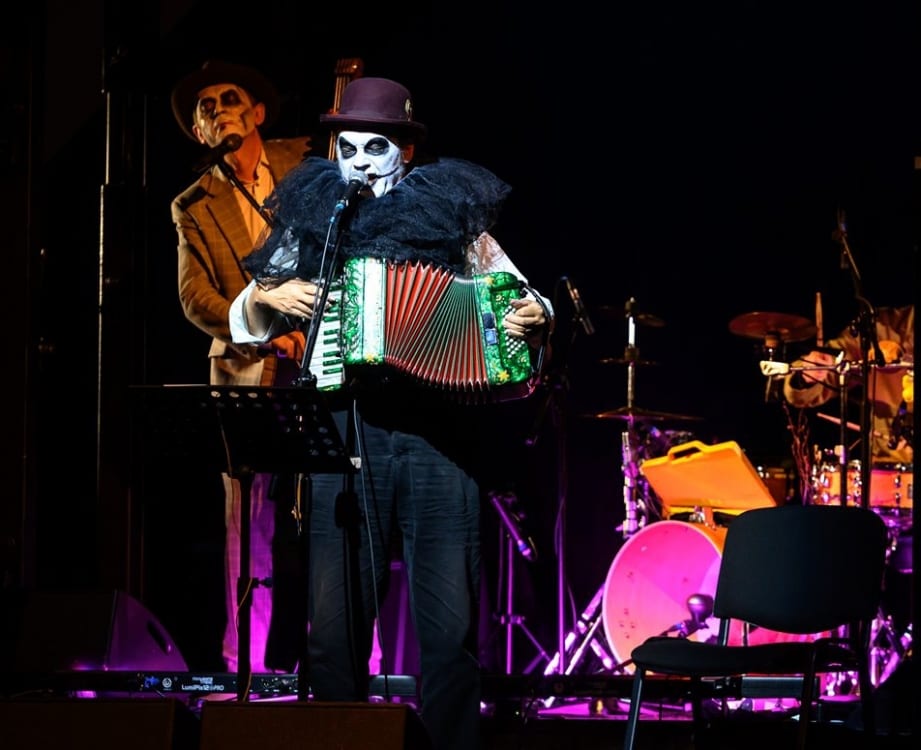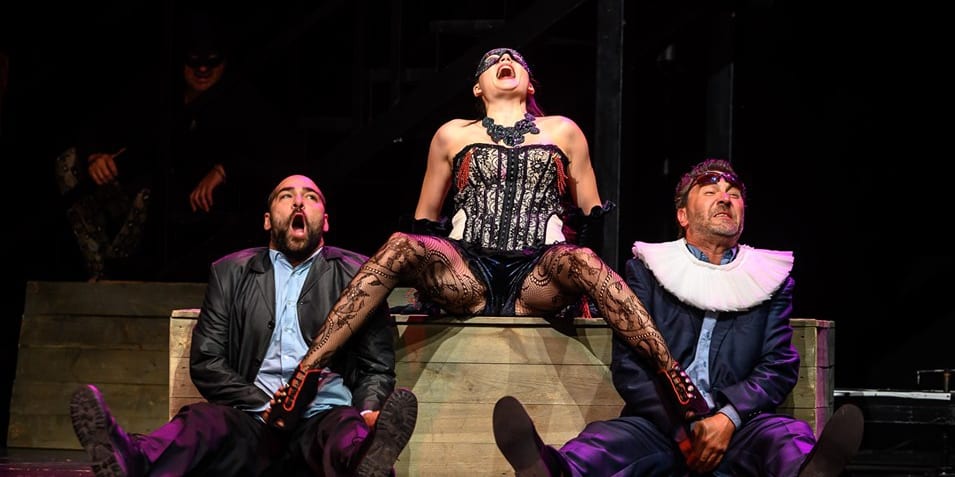Rosencrantz and Guildenstern are two minor characters in Shakespeare’s play Hamlet. They found fame in 1966 at the hands of Tom Stoppard, then a very young playwright (only 29). Stoppard offered them a new lease of life. The two characters bear the title role in his play, which is set against the backdrop of Shakespeare’s masterpiece, Hamlet. The leading characters from Hamlet visit these two insignificant characters and together explore important themes in the realm of the comic-tragic theatre where the absurd sits comfortably with reality.
When Rosencrantz and Guildenstern Are Dead was first performed at Cranston St, on the Royal Mile, during the 1966 Edinburgh Festival, all conservative critics slated it. It took a sharp-eyed critic like Ronald Bryden of the Observer to write that the show was ‘the most brilliant debut by a young playwright since John Arden’. By the 11th April 1967, the play was revived at the National Theatre, then moved on to Broadway where it was hailed by the New York Times as ‘very funny, very brilliant and very chilling’. The rest is history.
The present production is not a traditional take on Stoppard’s play. Liberties are taken by the Hungarian director, Tapasztó Ernő, and his team. They make a montage of Stoppard’s play, modifying some of the scenes to bring the play to the 21-century audience, so betting is on mobile and Gertrude takes a selfie. It is not as cheesy as it may sound. Judging by the audience response, at last night’s performance, it works brilliantly. There was a standing ovation, particularly, from the young audience.
Sex dominates the life of the characters. Guildenstern is desperate when sexually provoked by at a female member of the traveling players (Iulia Pop). A very fine performance is forthcoming from Éder Enikő as a tall and beautiful Gertrude. She has the grace of a monarch and the uninhibited sexual drive of what is socially tagged as a ‘loose woman’. A touch of brilliance which highlights the absurdity in the fictional-reality is having a dwarf as Claudius. Sándor Köleséri, who is a dwarf, exquisitely projects a short man, hungry for sex and power. There is something almost grotesque when he crawls under Gertrude’s skirt to lick her sexual organ, giving her an opportunity to express sexual satisfaction. In Ernő’s exposure to rulers, power, and sex, women seem to rule. Even Ophelia can exercise power over Hamlet, the king, and her father, from her ‘grave’. Ophelia, performed by Alexandra Gîtlan, lies in a glass coffin on a pile of love letters from Hamlet. Her coffin is next to an aquarium in which Yorick’s skull is submerged. She humorously and sardonically exploits that aquarium to ‘waterboard’ those responsible for her death.
The performances, all-round, are passionate and constantly explore serious themes in a playful manner. The macabre is dressed in bitter-sweet humour.

Last but not least, the introduction of a British musical trio, the Tiger introduces to the production the texture of dark cabaret. The music style clearly draws on pre-war Berlin. Influenced by Bertolt Brecht and Kurt Weill, it offers style that fuses an elegant, almost velvety macabre with sharpened punk music. Martyn Jacques wrote the music and lyrics and delivers it as part of the production.
Lighting designed by Ioan Horga, is effective and dramatic. The costumes by Janó Papp are appropriately some lavish and some simple, reinforcing unspoken statements.
This is a memorable performance that should be touring schools and beyond as numerous themes are there to explore in a post-show discussion.

